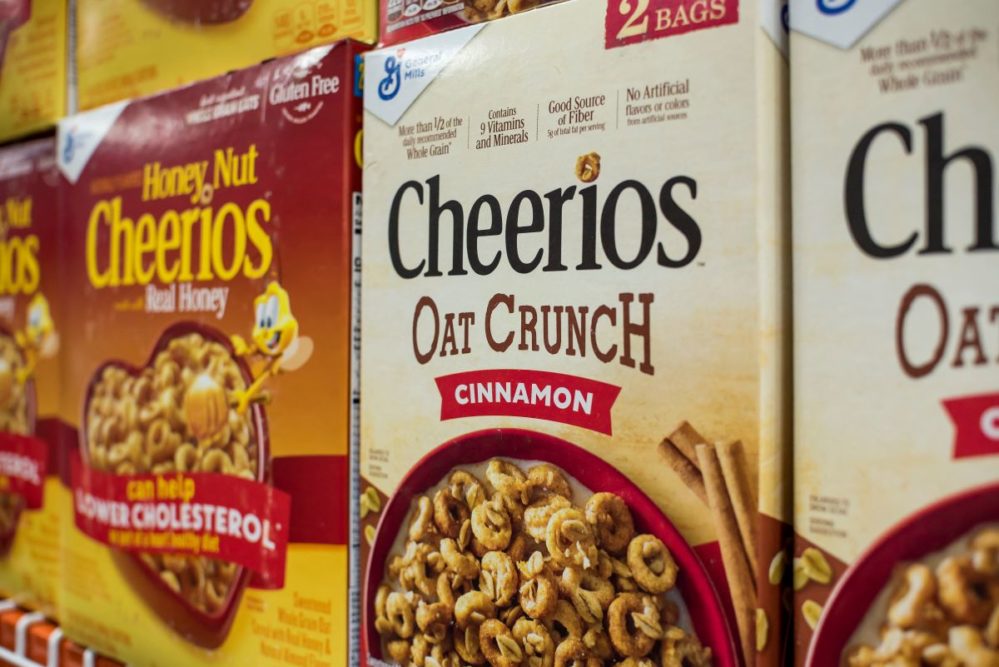BOSTON — General Mills, Inc. finds itself in a favorable position having made significant organizational changes and a series of moves to shape its portfolio over the past couple of years. In a Sept. 7 presentation at the Barclays Global Consumer Staples Conference in Boston, Jeffrey Harmening, chief executive officer of General Mills, Inc., said the company has made seven portfolio enhancing transactions in the past 13 months.
“We’ve been very active, and we’ve executed well against them,” Mr. Harmening said. “Announcing them is one thing but executing well against them is actually the important part.”
The combination of acquisitions and divestitures has been effective, resulting in fiscal 2022 growth in the 2% to 3% range, compared with 0% to 1% growth prior to the COVID-19 pandemic, he said.
As the company has reduced its administrative footprint, savings within the organization were beginning to appear in the fourth quarter that ended in May.
“Specifically in North America Retail, we have changed from kind of functional silos to having sales and supply chain and marketing all under one leadership,” Mr. Harmening said. “And what that’s allowed us to do is to become more agile. We moved our convenience business over to North America Retail, which has helped with our snacking business, and we’ve seen good growth out of that.”
The company has adjusted to unpredictability on several fronts throughout the course of the COVID-19 pandemic by changing the cadence of its operations, Mr. Harmening said.
“We now get together every week and we talk to things that are tactical,” he said. “We get together monthly, and we talk about things that are tactical and a little bit more strategic. And then quarterly, we get together and talk about things that are more strategic.
“Time has proven that the companies who go through tough stretches like we’ve all been through in the last two and half years. The companies that prevail are the ones who … invest through those difficult challenges.”
Even with the pricing the company has taken in recent quarters, volume elasticity has remained low. Mr. Harmening said he believes there are two main reasons for that.
“One is the supply chain disruptions,” he said. “And you’re not going to get a lot of promotional volume when you’re just having trouble keeping stuff on the shelf every day, which we all are still in the industry. But the other factor really is trading from away from home to at home, and we have really seen trade from away-from-home eating to at-home eating.”
With at-home eating on the rise, General Mills has enjoyed increased household penetration in its Pillsbury and Totino’s brands. The company also has seen consistent market share gains in its cereal business for several years.
“I’m confident in the strength of our cereal business,” Mr. Harmening said. “We’ve gained market share five years in a row, so I suppose part of the confidence is that.”
The cereal business is a great margin contributor for the company, he added.
Mr. Harmening said the company sees “tremendous upside potential” with the pet food segment. Sales in the Blue Buffalo pet segment have increased substantially since the company’s 2018 acquisition of the natural dog and cat food business.
“We have $1 billion more sales in pet food now than we did four years ago and high-margin pet food sales,” he said. “So, we’re quite pleased with how it has turned out. And we have had some challenges recently with keeping up with supply, frankly, because we’ve been growing so fast.”
He said the company has doubled household penetration for Blue Buffalo pet products since its acquisition.
When asked about promotional spending General Mills may face on the other side of the of the cost inflation curve, Mr. Harmening expressed very little concern. He said such worries about margin recovery would necessarily stem from a set of three beliefs.
“The first, you would have to believe that history doesn’t repeat itself when it comes to times of recession, which is to say that as we look back at prior recessions, promotional spending hasn't come roaring back,” Mr. Harmening said. “Pricing in our categories is up almost 19% over the last quarter, and our pricing is up roughly 20% if you look at scanner data.
“The second thing that you’d have to believe is that all the supply chain inefficiencies … almost instantaneously go away. That would be great for margins, but I don’t believe that’s going to happen.”
Thirdly, investors would need to believe that inflation will not only stabilize but decelerate.
“It seems to me that the chances of an environment where inflation decelerates is quite low,” he said.
Mr. Harmening described a recent development at General Mills he called a “disruptive growth organization.” He said this group is tasked with thinking like entrepreneurs and operates as a distinct unit within the company.
“Their job really is to find consumer problems and try to solve them,” Mr. Harmening said.
The types of problems could be anything from climate change to consumer health related challenges, he said.
“We have this group of people who are fully dedicated to nothing but trying to find disruptive growth opportunities,” he said. “And again, it’s not going to manifest itself in fiscal ‘23 in terms of the shape of our P&L. But we’re certainly hoping that three years from now and five years from now, we could be on a stage like this and talking even about one of the things that is wildly successful.”





